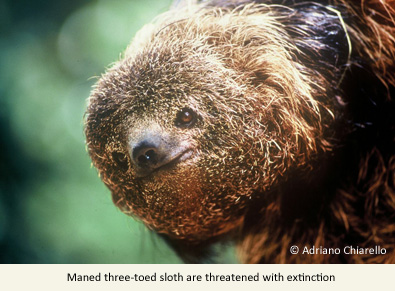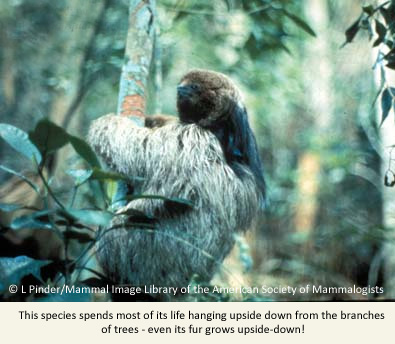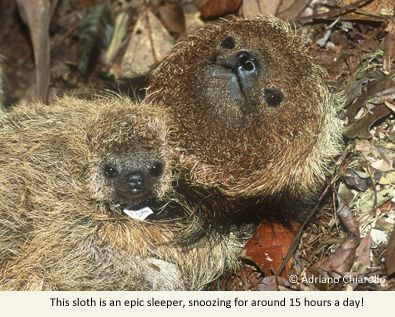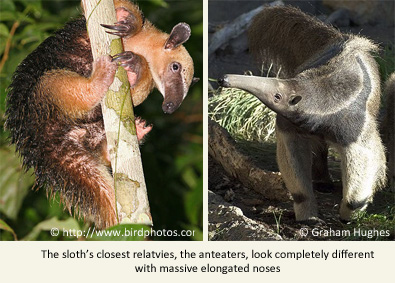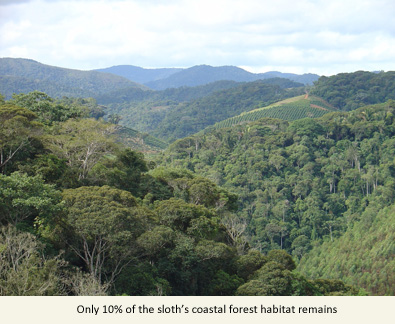The maned three-toed sloth (Bradypus torquatus) is EDGE mammal conservation priority number 63, and is also today’s IUCN Species of the Day.
Named after its long mane of black hair, which runs down the back of the neck and over the shoulders, the maned three-toed sloth is an incredible mammal which spends most of its life in the branches of trees, either hanging upside down or sitting in a fork. It is so well adapted to its upside-down lifestyle that even its fur grows in the opposite direction to that of most mammals!
These sloths don’t have any biting teeth, so instead they rip their leaf-food with their lips. Their slow lifestyle and poor food mean that sloths have a slow metabolic rate – about half that of most mammals – and they sleep for around 15 hours a day! Because of this, they visit the toilet infrequently, about once or twice a week, one of the few reasons why a sloth will come down from the tree-tops to the ground.
There was once a hundred species of sloth roaming the Earth, including giant land sloths and even aquatic sloths in Peru (you might not believe it, but living sloths are actually not bad at swimming either!)
Most sloth species went extinct about 10,000 years ago when prehistoric humans arrived in the Americas. Now only five species of sloth remain, all of which live in the tree-tops; their incredible evolutionary path means that their closest relatives – the anteaters – look and behave completely differently.
The maned sloth is the most threatened sloth species, because it is only found in the Atlantic coastal rainforest of Brazil; this habitat covers a small area, is disturbed and fragmented, and is getting rapidly smaller as a result of logging, charcoal production, and clearance for plantations and cattle pasture. The large gaps in the forest mean that some populations may already be extremely small. Today, the Atlantic forest is reduced to less than 10% of its original area, and this region has the highest human population in Brazil so the pressure on the forest is high.
The EDGE of Existence programme is working to conserve the world’s most remarkable threatened species . To support our efforts, please donate here.
